Canon PowerShot SD300: The Best Ultra-Compact in its Class?
by Stephen Caston on February 23, 2005 4:00 PM EST- Posted in
- Digital Camera
General Image Quality
For these pictures, the camera was reset to its factory default setting. Then, it was set to its highest quality recording setting. The pictures were then taken in Auto mode unless stated otherwise. Portrait-style images have been rotated using Irfanview's "lossless operations". Click on a thumbnail to view the full-size image. All images are in sRGB color space. 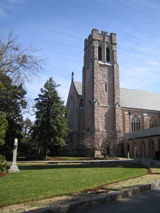 Click to enlarge. |
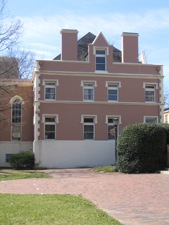 Click to enlarge. |
 Click to enlarge. |
 |
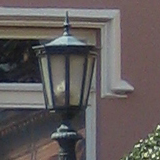 |
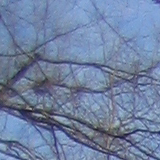 |
In the first sample above, the SD300 proves capable of producing images with excellent detail. We also noticed some blurring near the corners of the frame. Again, in the second sample, we were very impressed with the level of detail. However, we noticed some purple fringing along the top of the building and the branches at the upper-left of the frame. In the third sample, we have highlighted more corner blurring. We found this to be much more common in pictures taken at a wide angle than at the telephoto end of the optical zoom.
 Click to enlarge. |
 Click to enlarge. |
 (Macro mode, + 0.7 EV) Click to enlarge. |
 |
 |
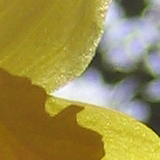 |
In the first sample above, we have cropped out a portion of the frame that reveals some JPEG artifacts. Although this was not a common problem with the SD300, it does appear in shadow areas such as this. In the second sample, our crop shows significant purple fringing around one of the subjects. We should also point out that corner blurring was not as much of an issue in this picture, since we had the camera at the telephoto end of the zoom. In the final sample, the SD300 proves that it can take some very good macro pictures. To counter the strong backlighting, we applied an exposure compensation of + 0.7 EV. With the ability to focus as close as 1.2", this camera certainly offers a lot of possibilities to the macro photographer.
Overall, we were very impressed with the SD300's image quality. The main issues were purple fringing and softness in the corners. We feel that both of these issues aren't so bad that they would compromise overall image quality. In fact, in an 8"x10" print, they would probably be hard to notice at all.
Long Exposure
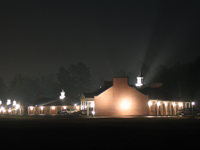 (8 seconds, ISO 50) Click to enlarge. |
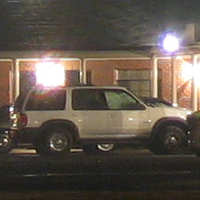 |
By enabling the "Long Shutter" option in Manual mode, the SD300 can expose images for up to 30 seconds. In our 8-second exposure above, the camera proves capable of capturing a respectable level of detail. We were expecting a less grainy image at ISO 50, but the amount of detail is decent. You can also see some purple fringing around the lights.
Movie Mode
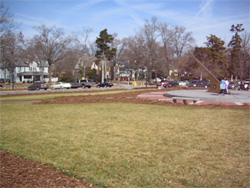
(640x480, 30 fps)
Click to view.










30 Comments
View All Comments
hoppa - Wednesday, February 23, 2005 - link
The SD300 is an awesome camera, but some note should be made of the very obvious artifacting in the resolution tests. The Canon may display slightly higher resolution than the Nikon, but that comes at a cost: the oversharping causes extreme moire and artifacting issues in very fine detail.Thank you for finally reviewing a top notch camera though!
IceWindius - Wednesday, February 23, 2005 - link
Meh, no thanks, I love my new A85 just fine and dandy.stephencaston - Wednesday, February 23, 2005 - link
AtaStrumf, thanks for the suggestion. Its always sort of tricky finding something suitable for video samples. Believe it or not, sometimes its really hard to find something interesting to shoot. I'll venture more into the downtown scene next time ;-)AtaStrumf - Wednesday, February 23, 2005 - link
OK, read the review. Fabulous camera! A friend of mine has a Canon PS ELPH SD110 (3MP, 2x zoom)http://www.dpreview.com/reviews/specs/Canon/canon_...
Also a nice camera, but the small lens size makes *S*Purple fringing (check spelling in your conclusion) a real pain in the you-know-where (not neck ;-). It shows up big and often, although SD300 seems to be a bit better.
One complaint: a bad movie sample. Shoot something more interesting next time and not so far away and detailed (it really gets blurred-lost), because I don't think anybody will be making IMAX type of movies with it. Show a stroll along the beach, kids playing, fish, cats something close up, colorfull and moving.
AtaStrumf - Wednesday, February 23, 2005 - link
Oh yea, I forgot to stress that the new stuff (lens and CCD sensor) are _THE_ most important features that can single-handedly make or break a camera.And just for those who don't know it yet: IXUS=ELPH (EU/US).
And........, yep I think that's it.
AtaStrumf - Wednesday, February 23, 2005 - link
Haven't read the review yet but I gotta say this right now anyway, because I just saw the pricetag on this IXUS and I already know it's not for me.Just today I was thinking that next time you guys put up a review I gotta ask you to review a Canon PowerShot A510 and/or A520. It may seem just like a A75/A85 in a new form factor, which I suppose it is, but it also has a new lens and there is some confusion about wheather or not both A510 and A520 use the same CCD sensor, so I'd really like to see a review before I buy, but I just can't find any, which is really odd, considering it looks like just the right combination of features and price, which should make it extremely popular choice.
Please, please, please review this camera.
Sorry about the stupid long sentence, but I think it conveys very well exactly what I wanted to say.
PrinceGaz - Wednesday, February 23, 2005 - link
Whew, that seems like the sort of camera I'll get if I fancy something better than my Minolta DiMAGE X20. Only downside I can see to the Canon is that it uses a proprietary battery rather than AA cells so I'd have to take the charger with me rather than simply taking a few sets of ready to use NiMH away with me, but I guess they couldn't have made the camera so small otherwise.Given the Canon's impressive movie capature ability, is there a limit to what size SD card the camera accepts? Will it take 1GB and the recently introduced 2GB SD cards? 640x480 @ 30fps MJPEG will eat the megabytes up pretty quickly, if the 320x240 @ 15fps MJPEG my camera can do is anything to go by.
nels0360 - Wednesday, February 23, 2005 - link
The SD300 is a great little camera. I bought one in December. It does have a couple of drawbacks though.In photos taken in low light, the photos occasionaly come out with a bright white "swirl" in the image. It is the flash refecting off of dust apparently. It is mentioned on the Canon website in the FAQ for this camera. This has ruined more than one of my photos.
Also, as with many ultra-compacts, red-eye is a problem even with the red-eye reduction flash. There is just no avoiding it in some shots, but that is what Photoshop is for.
If you get this camera, make sure to get the Canon leather case designed for it. It is incredibly small, comes in red or black and looks good to boot.
ksherman - Wednesday, February 23, 2005 - link
dont ell me we are russian into the Soviet jokes again...Great review, and a gret product! I defenitly want one of these suckas!
Houdani - Wednesday, February 23, 2005 - link
In Soviet Russia, Canons power shoot YOU!